Convert Miles to Meters: Formula, Steps, and Examples
reviewed by Jo-ann Caballes
Updated on November 15, 2024
Miles-to-meters conversion is crucial to all US residents since our country is slowly implementing the international system of units. Meanwhile, most Americans still use the imperial system for daily usage. Use tips from this article to determine the difference between meter vs mile and how to properly convert one measurement to another.
Miles-to-Meters Conversion
While converting miles to meters, it’s vital to understand the difference between both of them. A mile is a unit of length used in the imperial and US customary systems. It originated from the Roman mile, which was about a thousand paces.
The meter is the base unit of length in the International System of Units (SI). It’s defined in terms of the speed of light in a vacuum. Converting miles to meters (or vice versa) is a common task in fields like:
- Science and Engineering: When working with international standards and data.
- Geography and Cartography: When dealing with maps and distances, it’s crucial to know what it will be 1 mile in meters, so you can implement this knowledge on a larger scale.
- Transportation: For navigation, logistics, and planning. Mile-to-meter conversion is crucial for mixed Canadian-American or Mexican-American teams.
How many meters in a mile?
Converting 1 mile to meters is 1,609.34 meters. So, a mile is basically closer to a kilometer (1000 meters) than a meter.
The 1,609 will be your conversion factor while determining how many meters in a mile. You will just multiply the number of miles (e.g., 10 miles) with the factor of 1,609. So, 10 miles in a meter will be 16090 meters or approximately 16 kilometers.
How many miles is 1000 meters?
1000 meters (one kilometer) is approximately 0.62 miles.
It will be your conversion factor while converting meters to miles. For instance, during a Paris trip, Google Maps shows you that your favorite shop is 7.5 kilometers away from you. To determine how many miles you should drive, use the conversion factor and simply multiply these two numbers. So, your favorite shop will be just 4.6 miles away.
Meters-to-Miles Formula
To convert meters to miles, you should use a conversion factor that tells how many units of one measurement are equal to one unit of another measurement. As you can see, 1 mile to meters is 1609.34 meters. So, it will be our conversion factor, and the general meters to-miles formula will look like this:
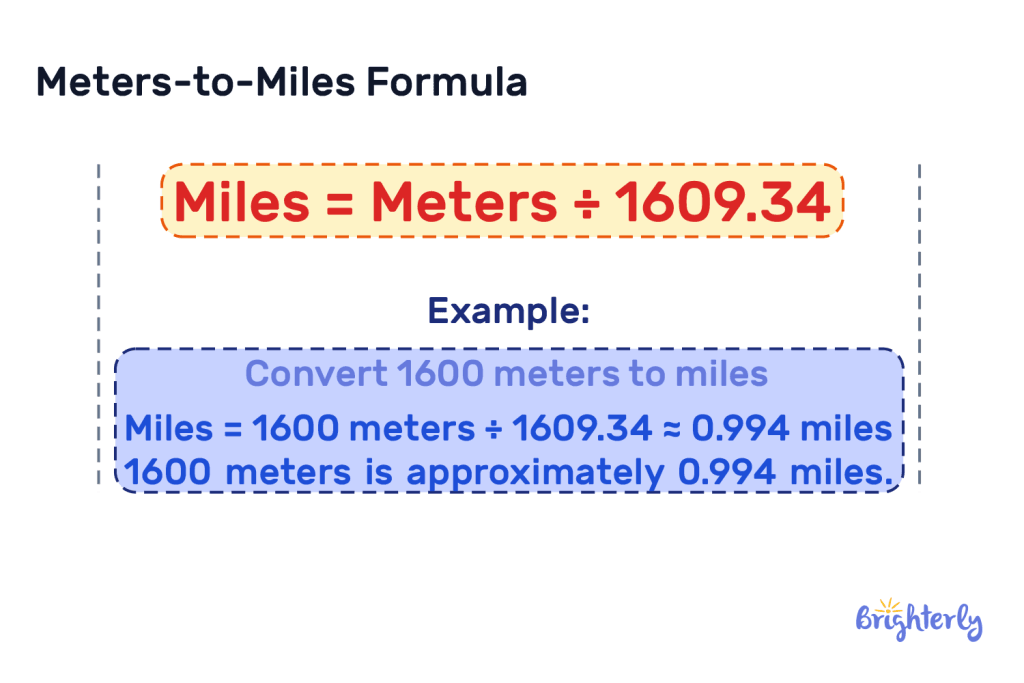
Let’s say you want to convert 1600 meters to miles.
Miles = 1600 meters ÷ 1609.34 ≈ 0.994 miles
1600 meters is approximately 0.994 miles.
How to Convert Miles to Meters?
If you want to convert miles to meters, multiply by the conversion factor. Your formula will be next:
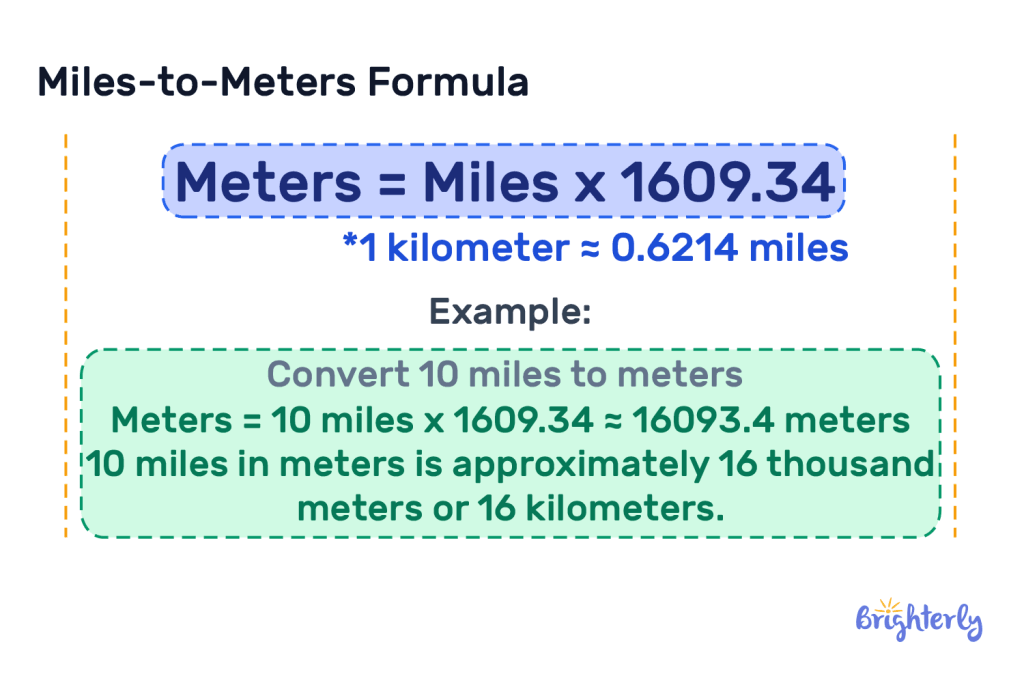
Let’s say you want to convert 10 miles to meters:
Meters = 10 miles * 1609.34 ≈ 16093.4 meters
So, 10 miles in meters is approximately 16 thousand meters or 16 kilometers.
Miles-to-Meters Conversion Table
Miles-to-meters conversion is simpler than you may think. Once you determine the logic behind the process, it will be easy to calculate it.
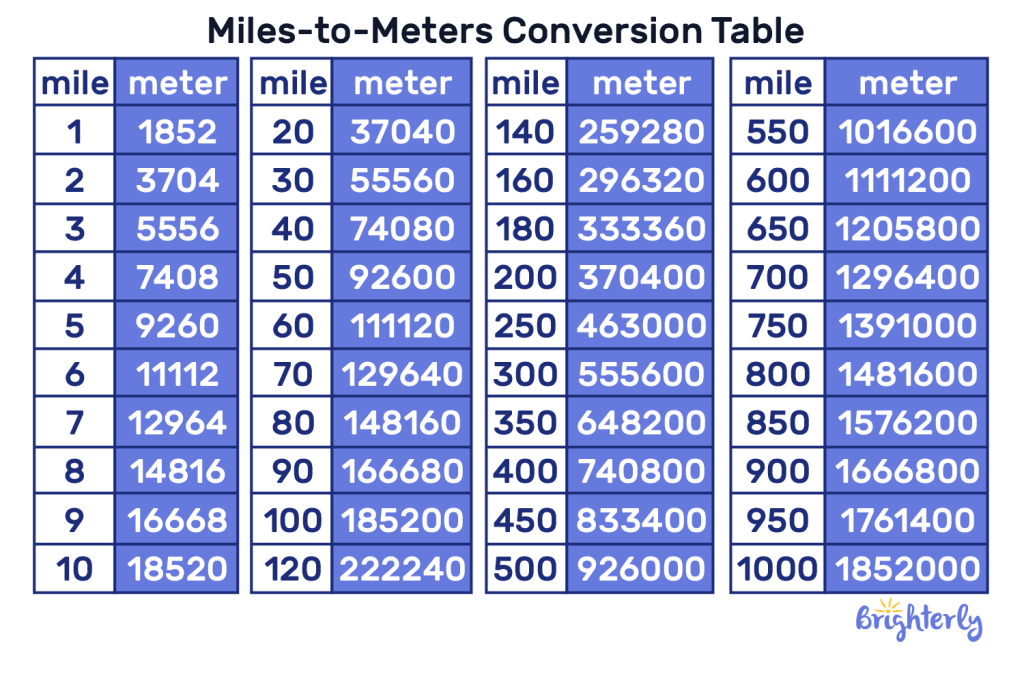
Meters VS Miles: What’s The Crucial Difference
Meters and miles are both units of length, but they belong to different measurement systems. Meters are based on multiples of ten, where a dekameter is 10 times more than a meter, 100 meters is a hectometre, and 10 hectometers is a kilometer.
Meanwhile, miles are a part of the imperial system that uses parts of the human body to measure lengths. So, while you convert miles to meters, you should understand that the imperial system may have tricky logic for modern humans, but it will be the easiest way to measure things just 100 years ago.
Solved Math Tasks: Examples
Solved math problem 1
You’re planning a trip from New York to Philadelphia, and you know that there are 95 miles from your home to Philly. However, your curious Canadian friend asks about this distance in kilometers. Let’s convert 95 miles to kilometers.
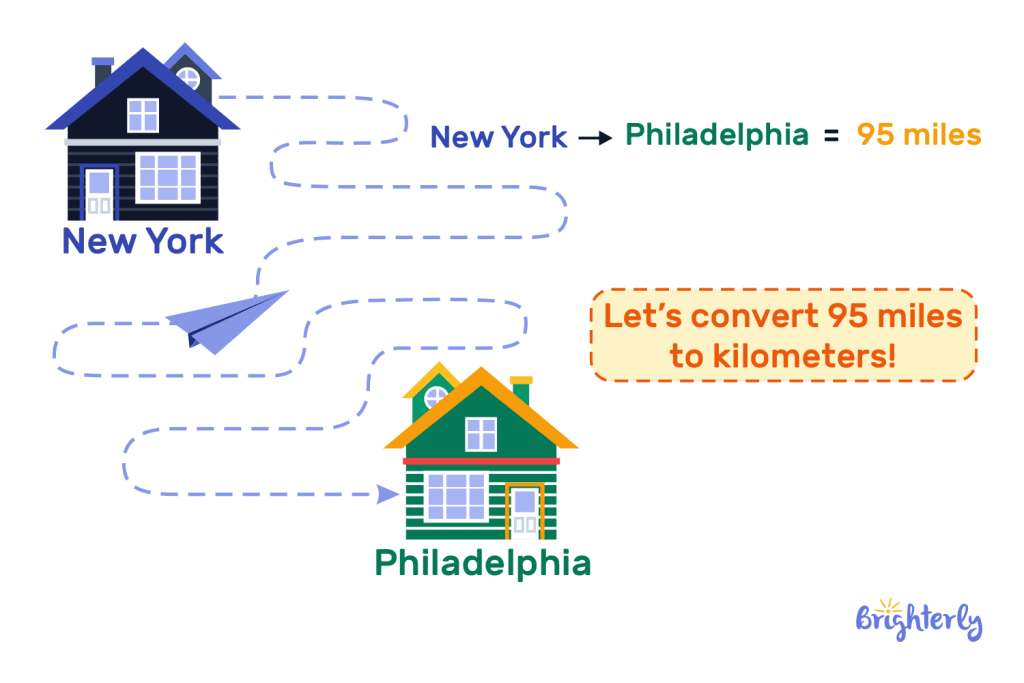
Answer
You need to use a conversion factor, where 1 mile ≈ is 1,609 meters or 1.6 kilometers.
The next step is to multiply both parts. 95 miles * 1,609 meters/mile ≈ 152855 meters ≈ 152 kilometers.
|
So, by using our miles-to-m converter, you determine that the distance between NYC and Philadelphia is approximately 152 kilometers. |
Solved math problem 2
Your European friend tells you that their sibling lives 14,000 meters (14 kilometers) from them. You are naturally curious about this distance in miles. Let’s convert it together.
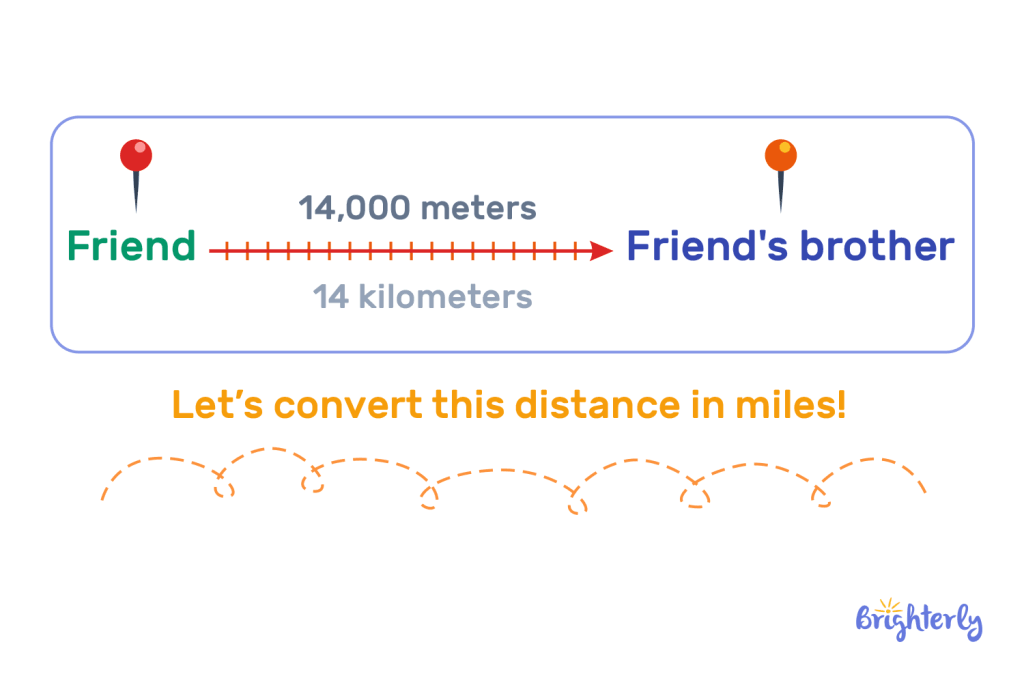
Answer
To convert 14,000 meters to miles, you need to divide the distance with the conversion factor. And while 1 kilometer is approximately 0.6214 miles, you’ll get the following results:
14,000 meters * 0.6214 miles/kilometer ≈ 8.6996 miles
| So, your friend’s sibling lives approximately 8.7 miles away. |
Solved math problem 3
You’re planning a hiking trip in the Rocky Mountains. The trail guide indicates that your potential hike is 12 miles long. However, your Canadian friend asked about the longevity of this trip in kilometers. Convert miles to kilometers.
Answer
You’ll need to use a conversion Factor where 1 mile is approximately 1.6 kilometers. So, in your situation, 12 miles * 1.6 kilometers/mile ≈ 19.3 kilometers.
| You can tell your friend that the hike will be 19 kilometers long. |
Convert Miles to Meters: Practice Math Problems
Convert Miles to Meters: Worksheets
It may be complicated to convert meters per mile, even for adults. That’s why we, at Brighterly, decided to create friendly worksheets that will be easy to understand, even for the youngest kids. Use our measurement worksheets to upgrade your conversion skills to the maximum:






